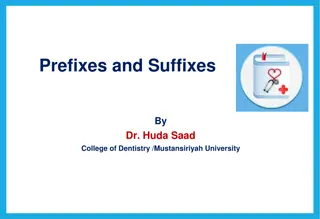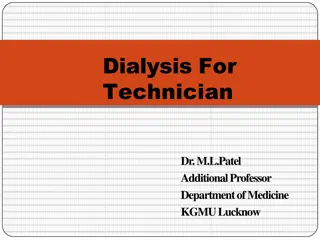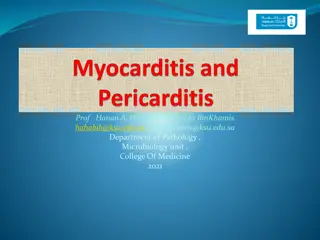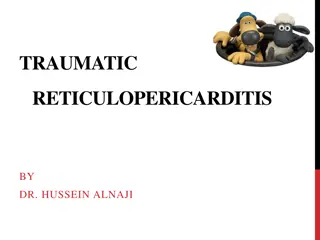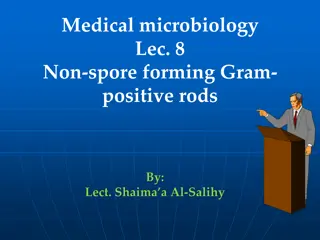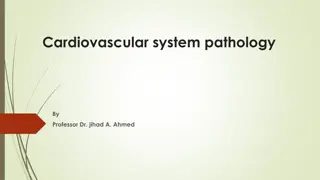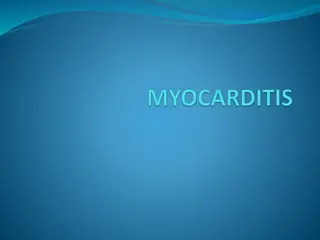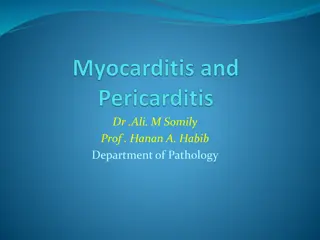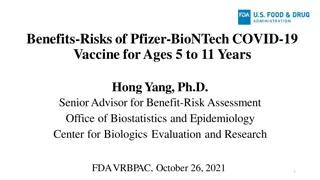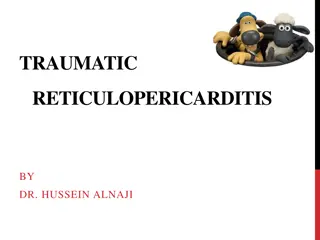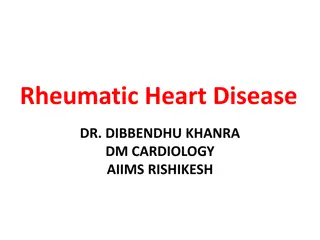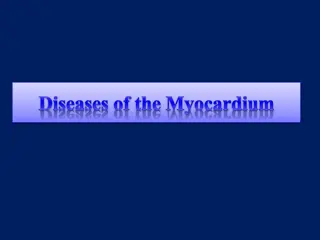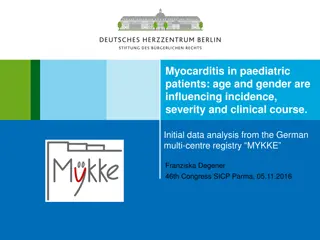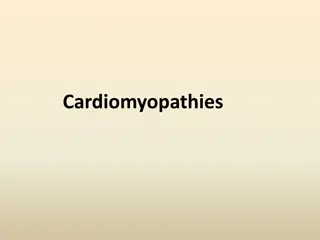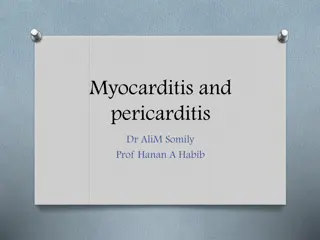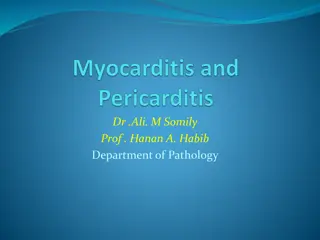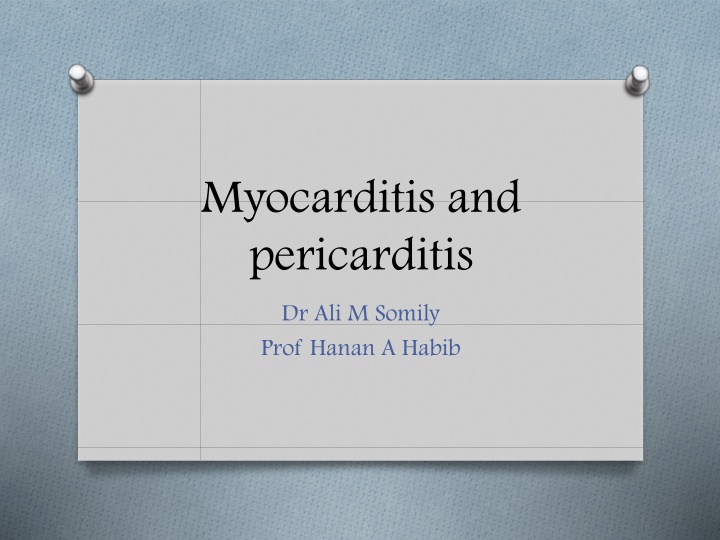
Myocarditis and Pericarditis: Causes, Symptoms, and Management
Learn about myocarditis and pericarditis, inflammatory conditions affecting the heart muscle. Explore causes, symptoms, epidemiology, and clinical presentation for better understanding and management of these conditions. Viral infections, bacterial causes, parasitic sources, and noninfectious factors can contribute to myocarditis and pericarditis, leading to a range of symptoms from mild to severe, including congestive heart failure. Early recognition and appropriate treatment are crucial for managing these cardiac conditions effectively.
Download Presentation

Please find below an Image/Link to download the presentation.
The content on the website is provided AS IS for your information and personal use only. It may not be sold, licensed, or shared on other websites without obtaining consent from the author. If you encounter any issues during the download, it is possible that the publisher has removed the file from their server.
You are allowed to download the files provided on this website for personal or commercial use, subject to the condition that they are used lawfully. All files are the property of their respective owners.
The content on the website is provided AS IS for your information and personal use only. It may not be sold, licensed, or shared on other websites without obtaining consent from the author.
E N D
Presentation Transcript
Myocarditis and pericarditis Dr Ali M Somily Prof Hanan A Habib
Introduction O Myocarditis is inflammatory disease of the heart muscle. O Mild & self-limited with few symptoms or severe with progression to Congestive heart failure & dilated cardiomyopathy O Very localized or diffuse O Myocarditis can be due variety of infectious and non infectious causes O Viral infection is the most common cause O Others like toxin drugs and hypersensitivity immune.
Infectious Infectious Noninfectious Noninfectious Viruses 1. 2. Systemic Diseases: 1. SLE 2. Sarcoidosis 3. Vasculitides(Wegener s) 4. Celiac disease Coxsackie B HIV Bacterial Neoplastic infiltration 1. Corynebacterium diphtheriae Protozoan Drugs & toxins: 1. Ethanol 2. Cocaine 3. Radiation 4. Chemotherapeutic agents - Doxorubicin 1. Trypanosoma cruzi (Chagas disease) Spirochete 1. Borrelia burgdorferi (Lyme disease)
Etiology, Epidemiology and Risk Factors O Epidemiology not accurate estimate of incidence as many cases are mild & brief and diagnosis is not made. O Coxsackievirus Coxsackievirus B B is the most common cause of myocarditis O Other virus Other virus like coxsackievirus A, other echoviruses, adenoviruses influenza, EBV, rubella, vericella, mumps, rabies, hepatitis viruses and HIV. O Bacterial causes Bacterial causes include corynebacterium diptheriae, syphilis, Lyme disease or as a complication of bacterial endocarditis.
O A parasitic A parasitic cause includes chagas diseases, trichinella spiralis, taxoplasma gondii and Echinococcus. O Other Other includes rickettsia, fungi, Chlamydia, enteric pathogens, legionella and tuberculosis. O Giant cell Giant cell myocarditis thyrotoxicosis. myocarditis due thymoma, SLE or
Clinical presentation O Highly variable, days to weeks after onset of acute febrile illness or with heart failure without any known antecedent symptoms; O Fever, headache, muscle aches, diarrhea, sore throat and rashes similar to any viral infection O Sever, chest pain, arrhythmias or sweating fatigue and may present with congestive heart failure.
Differential Diagnosis O Acute Myocarditis O Vasculitis O Cardiomyopathy ((drugs, radiation)
Diagnosis O WBCs, ESR, Troponins and CK-MB usually elevated O ECG (nonspecific ST-T changes and conduction delays are common) O Blood cultures O Serology ; Viral serology and other specific test for Lyme, diphtheria and Chagas disease maybe indicated on a case by case basis. O Radiology: Chest X-rays show cardiomegaly, MRI and Echocardiogram O Heart muscle biopsy
Endomyocardial Bx O Pathologic exam may reveal lymphocytic inflammatory response with necrosis, but this is not sensitive b/c of the patchy areas of distribution. O Dallas criteria for histopathologic dx O May see Giant cells
Management O Often supportive; O Restricted physical activity in heart failure. O Specific antimicrobial therapy is indicated when an infecting agent is identified O Treatment of heart failure arrhythmia O Other drugs indicated in special situations like anticoagulant, NSAID, steroid or immunosuppressive immunomodulatory agents. O Heart transplant
Management O Most cases of viral myocarditis are self limited. O One third of the patients are left with lifelong complications, ranging from mild conduction defects to severe heart failure. O Patient should be followed regularly every 1- 3 months. O Sudden death may be the presentation of myocarditis in about 10% of cases.
Pathophysiology O Contiguous spread O lungs, pleura, mediastinal lymph nodes, myocardium, aorta, esophagus, liver O Hematogenous spread O septicemia, toxins, neoplasm, metabolic O Lymphangetic spread O Traumatic or irradiation
Pathophysiology O inflammation provokes a fibrinous exudate with or without serous effusion O the normal transparent and glistening pericardium is turned into a dull, opaque, and sandy sac O can cause pericardial scarring with adhesions and fibrosis
Pericarditis O Pericarditis is an inflammation of pericardium usually of infectious etiology O Coxsackievirus A and B, echovirus are the most common causes O Other includes herpes viruses, hepatitis B , mumps, influenza, adenovirus Varicella and HIV
O Bacterial Bacterial Pericarditis pulmonary infections (e.g. pneumonia empyema): S. pneumonia, M. tuberculosis, S. aureus, H. influenzae, K. pneumoniae and legionella. O HIV patients HIV patients may develop pericardial effusions (tuberculosis M. avium complex). O Disseminated fungal infection Disseminated fungal infection (Histoplasma, Coccidioides) O Parasitic infections Parasitic infections (disseminated toxoplasmosis, contagious spread of Entamoeba histolytica )are rare causes. Pericarditis usually complication of
Types of pericarditis O Caseous Caseous pericarditis pericarditis commonly tuberculosis in origin. O Serious Serious Pericarditis Pericarditis by autoimmune diseases (rheumatoid arthritis, SLE). O Fibrous Fibrous Pericarditis Pericarditis: A chronic Pericarditis usually caused by suppurative, caseous, or encased in a thick layer of scar tissue.
Types of Effusive Fluid O Serous Serous O transudative - heart failure O Suppurative Suppurative O pyogenic infection with cellular debris and large number of leukocytes O Hemorrhagic Hemorrhagic O occurs with any type of pericarditis O especially with infections and malignancies O Serosanguinous Serosanguinous medslides.com 18 9/98
Constrictive Pericarditis O Idiopathic O radiotherapy O cardiac surgery O connective tissue disorders O dialysis O bacterial infection 19
Clinical presentation O Patients with Pericarditis will present with sudden pleuritic chest pain, fever, dyspnea and a friction rub. O Patient with tuberculous pericarditis has insidious onset of symptoms. O On examination exaggerated pulsus paradoxus JVP and tachycardia. O As the pericardial pressure increases, palpitations presyncope or syncope may occur.
Tuberculous Pericarditis* O Incidence of pericarditis in patients with pulmonary TB ranged from 1-8% O Physical findings: fever, pericardial friction rub, hepatomegaly O TB skin test usually positive O Fluid smear for TB often negative O Pericardial biopsy more definitive medslides.com 21 9/98
Acute Pericarditis Differential Diagnosis O Acute myocardial infarction O Pulmonary embolism O Pneumonia O Aortic dissection
Diagnosis O ECG will show ST elevation, PR depression and T-wave inversion may occur later. O Leukocytosis and an elevated ESR are typical O Other routine testing urea and creatine. O Blood culture O PPD skin test is usually positive in tuberculous Pericarditis. O Chest x-ray may show enlarged cardiac shadow or calcified pericardium and CT scan show pericardial thickening >5mm. O Pericardial fluid or pericardial biopsy specimens for fungi, antinuclear antibody tests and histoplasmosis.
Management O Management is a largely supportive for cases of idiopathic and viral Pericarditis including bed rest and NSAIDS, Colchicine. O Corticosteroid is controversial and anticoagulants usually contraindicated. O Specific antibiotics must include activity against S. aureus and respiratory bacteria. O Antiviral O Acyclovir for herpes simplex or varicella ganciclovir for CMV etc.
Management O Pericardiocentesis to relief tamponade. O Patients who recovered should be observed for recurrent. O Symptoms due to viral Pericarditis usually subsided within 1 month. O Uremic, rheumatic, collagen in 30% of patients include pericardial effusion and tamponade, constrictive Pericarditis and pleural effusion. O Restrictive Pericarditis and heart failure.

